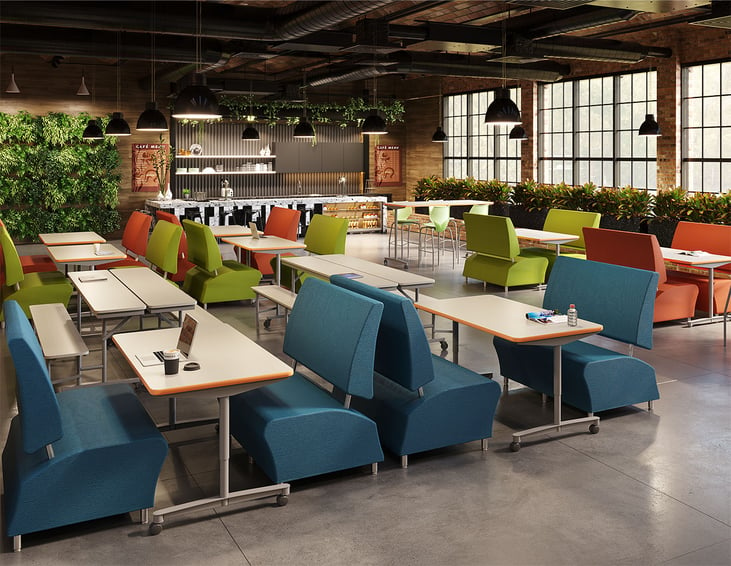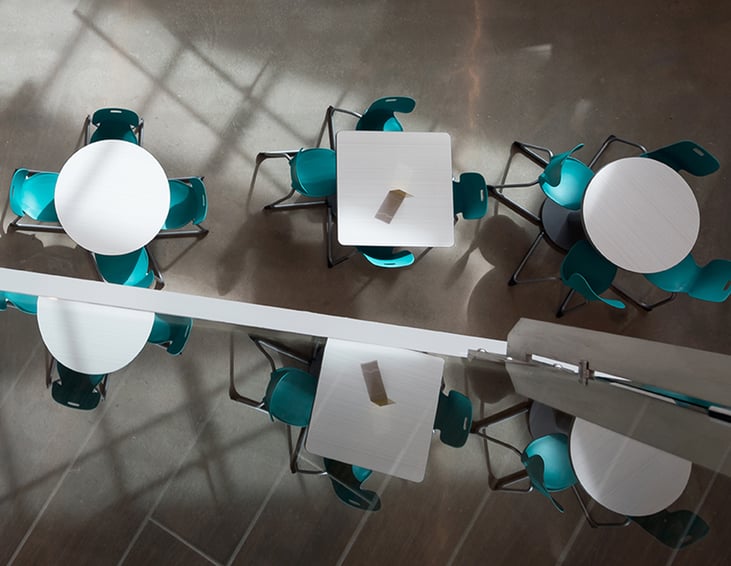more than just a place to eat
Cafeterias can often serve as social hubs within schools, but their significance as social spaces may vary depending on the school's culture and layout. In many schools, the cafeteria is a central gathering place where students come together to eat, socialize, and interact with their peers during lunch breaks. It's a time for students to catch up with friends, join group conversations, and form connections outside of the classroom.
Cafeterias can also host various activities and events, such as club meetings, fundraisers, or special performances, further enhancing their role as social hubs. Additionally, students may use the cafeteria as a place to study, collaborate on projects, or simply relax during free periods.
However, it's important to note that the extent to which cafeterias function as social spaces can vary. Factors such as school size, student preferences, and alternative social spaces within the school, such as courtyards, libraries, or common areas, can also influence the social dynamics of a school.

tips for designing a social hub
When designing cafes in schools, it's important to consider both functional and aesthetic aspects to create an inviting and practical space. Here are some tips to keep in mind:
-
-
-
Space planning: Begin by assessing the available space and determining how it can accommodate different seating arrangements, serving counters, and circulation paths. Ensure that the layout allows for easy movement of students and staff, especially during peak hours.
-
Flexible seating options: Provide a variety of seating options to cater to different preferences and group sizes. Incorporate a mix of tables, chairs, booths, and lounge areas. Consider using movable furniture to allow for flexibility and easy reconfiguration.
-
Adequate seating capacity: Ensure that the cafe has sufficient seating capacity to accommodate a significant number of students, especially during busy periods. Avoid overcrowding and provide enough space between tables to promote comfort and ease of movement.
-
Study and collaboration areas: Designate spaces within the cafe for studying and group work. Provide comfortable seating, workstations, and access to power outlets for laptops and other devices. Consider incorporating whiteboards or other collaboration tools to support student projects and discussions.
-
Acoustic considerations: Implement sound-absorbing materials such as acoustic ceiling panels, wall coverings, or floor mats to minimize noise levels. This will help create a more peaceful and conducive environment for conversation and studying.
-
Student input: Involve students in the design process by seeking their opinions and suggestions. Conduct surveys or hold focus groups to understand their preferences and incorporate their ideas into the cafe design. This will help create a space that truly meets the needs and desires of the student body.
-
-

helpful links
EXPLORE cafe + cafeteria ideas
Click through cafe + cafeteria ideas below or visit our image gallery of cafe spaces designed to promote comfort, configurability, mobility, and accessibility in a variety of learning environments.

RELAXATION + COMFORT
Lounge spaces provide a comfortable and cozy environment where individuals can unwind, relax, and enjoy their time in the cafe. They offer a more laid-back atmosphere compared to traditional dining areas, allowing students to feel at ease and stay longer in the dining hall.

DIFFERENTIATED EXPERIENCE
Lounge spaces differentiate the cafe experience from traditional dining settings. They provide a unique atmosphere that sets the cafe apart and makes it more appealing to customers seeking a relaxed and casual environment.
ENHANCED AESTHETICS
Well-designed lounge spaces can elevate the overall ambiance and aesthetics of the cafe. By incorporating stylish furniture, cozy seating arrangements, and attractive decor, cafes can create visually appealing spaces that contribute to a positive student experience.

ACTIVE + HEALTHY ENVIRONMENT
Standing while eating promotes a more active lifestyle and helps prevent sedentary behavior. By incorporating standing height tables, schools encourage students to be on their feet and engage in light physical activity during meal times. This can contribute to overall health and well-being by reducing the time spent sitting.

TITLE
copy

TITLE
Copy

MULTI-PURPOSE SPACES
are becoming more cafe and less cafeteria.

STARBUCKS AT SCHOOL?
Why not incorporate familiar details in a space where students can hang out while they eat or work?

TITLE
copy

TABLE BY THE WINDOW
Bistro tables and stools can be for eating, socializing, or working in small groups.
reinvent the school lunchroom
Remember, the design of a school cafe should prioritize functionality, comfort, and creating an environment that fosters social interaction, relaxation, and productivity for students.

